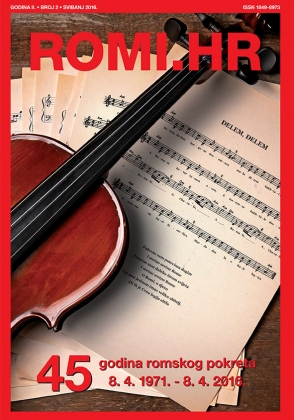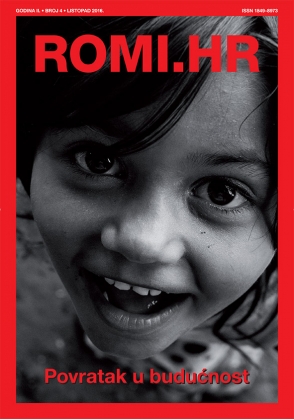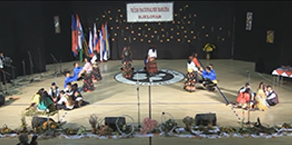Focus ROMI.HR
/The Romani language reflects the travels of the Roma people from India to Europe: on the way, they borrowed words from Persian, Turkic, Semitic, and Armenian languages. Some of these influences even changed the way the language was structured, and through these words, we can trace the Roma’s journey and the cultures they met.
There is an opinion among linguists that a language reflects the history of its speakers. For example, by studying borrowed words and grammatical forms, it is possible to determine with which peoples the speakers of a language had cultural and geographical contacts.
This statement about language is fully true for the Romani language. According to the available information, from the 5th century the Roma people began their journey from India to the west. On their way, the Roma came into contact with various peoples and their languages, which could not help but affect the Romani language, which subsequently led to the formation of significant territorial differences in language and, as a result, dialects of the Romani language.
The first region that had a significant influence on the language and culture of the Roma was Persia (the old name of the territory of today's Iran). Nowadays presence of Romani can be found in almost all Iranian provinces. They are known under variety of names: Jat (Khorasan, Afghanistan), Qarači (Azerbaijan), Gowdari (Baluchestan), Lavand, Širāzi (Baḵtiāri), Sudāni (Persian Gulf) etc. Nonetheless, more commonly used among them is Kowli. According to linguists, this word could have Indo-Aryan origin (cf. Hindi kālā “black”).
The Romani language in this region was highly influenced by Iranian and Turkic languages. In addition to a number of lexical borrowings, linguists have a hypothesis that the caritive construction was borrowed from Persian languages. The caritive construction implies the non-inclusion of an object or person in a situation, in other words, when we talk about the absence of something. The standard indicator of this construction in the Romani language is bi, which is most often considered a prefix or preposition:
báxt “happiness” – bibáxt “unhappiness”;
boldò “baptised” – biboldò “unbaptised”.
It is believed that the formation of this construction was influenced by a preposition in medieval Persian be «but, out» (cf. Modern Persian bi بی «without»).
Undoubtedly, a large layer of vocabulary was also borrowed from the Persian language:
taxtaj “a cup” (from Persian طشت (tašt));
dorija “river” (from Persian دریا (daryâ));
zor “force” (from Persian زور (zor)).
Regarding the vocabulary, it is worth adding that the Indo-Persian core of the Romani language in this region was supplemented by words of Semitic origin (for example, Arabic or Hebrew), resulting in the emergence of doublet forms, that is, the same concept is represented in the language by two words with the same meaning. Because of this reason, there are such forms like:
Indic āk “eye” and nuhur (cf. Arab. nūr نور “light”);
Indic pānī “water” and miō(w) (cf. Heb. maim מַיִם “water”).
The route of the Roma people passed through Anatolia which is also known as Asia Minor (territories of modern Turkey), where Armenian was one of the languages that influenced the Romani language, which was also reflected in the vocabulary:
bov “oven” (from Old Armenian բով (bov) “furnace”);
kotor “piece” (from Old Armenian կոտոր (kotor) “part, piece”);
grast “horse” (from Old Armenian գրաստ (grast) “pack animal”)) .
At that time, Anatolia was part of the Byzantine Empire, so from this moment onwards the unique process of significant transformation of the Indic language (i.e. a language that is originally from The Hindustan Peninsula) begun under strong influence of Balkan languages (mostly Greek and Slavic ones), which is worth telling in more detail later.
Language materials are an important addition to the work of historians on dating certain historical events. In the case of the Romani language, all stages of migration of the speakers of this language have been preserved which means that based on sources of borrowings we can judge which peoples the Roma interacted with. Changes in the Romani language have mostly affected vocabulary, while the influence of Armenian and Persian languages on the structure of the language is quite insignificant. We can only guess what languages sounded like in the past, but it seems that the Romani language at the time of the Roma's arrival in Europe represented exactly the combination of features described above.
 Back to Focus
Back to Focus

.jpg)











